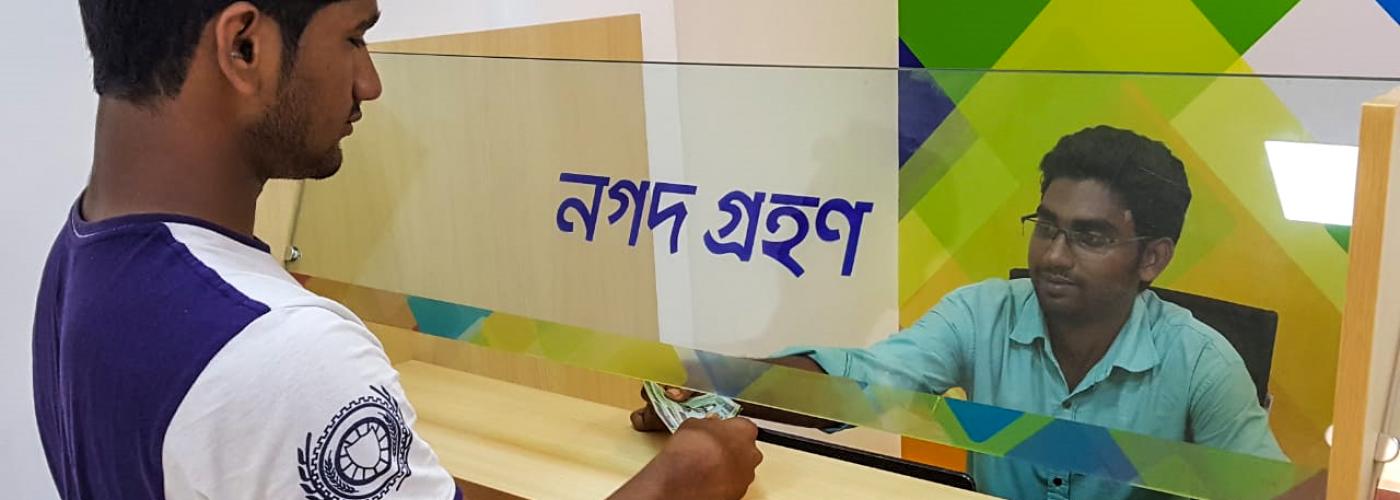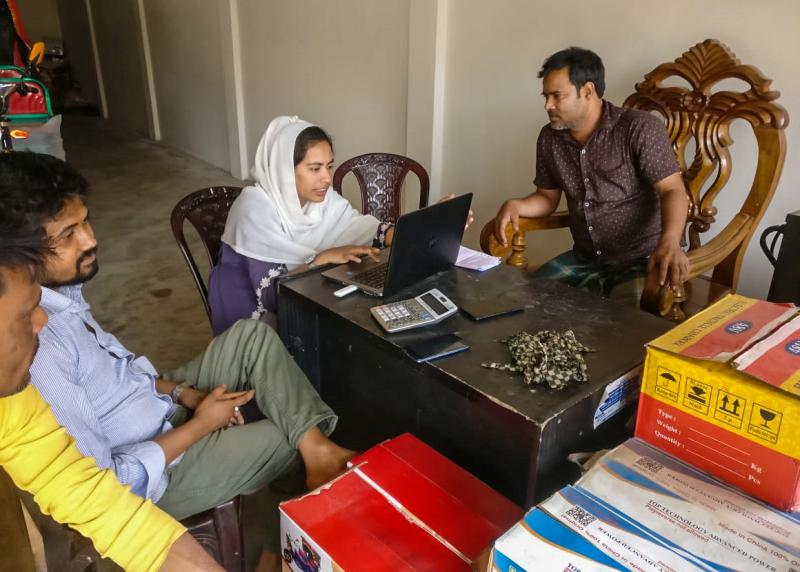In Wake of COVID-19, Bangladesh Banks Pivot Toward Community and Digital Solutions
Image

In the midst of a global pandemic, financial institutions across the globe have been under considerable strain. In August, The Economist reported that “more than two-thirds of [microfinance institutions] have cut lending, often by at least half,” according to the Consultative Group to Assist the Poor. In countries like Bangladesh, where the gap in supply and demand for financing is estimated at $6.8 billion, microfinance is essential to growing businesses. As COVID-19 continues to unfold, financial institutions must adjust their strategies and implement innovative solutions to meet growing demand and prevent the gap from widening further.
Deploying Banking Agents to Reach Rural Communities
Agent banking may be one way of deepening financial inclusion. In Bangladesh, agent banking is a cost-effective way for banks to expand their footprint into previously underserved communities and deepen financial inclusion. In some cases, it is 86 percent less expensive than setting up traditional branches because agents typically use their own businesses as banking outlets.
Agents can provide underserved populations with limited banking and financial services, such as cash-in and cash-out, utility payments, bank account openings, savings products, and fund transfers either in-person or through mobile devices. They are typically members of the community, allowing them to build personal and trusted relationships with customers who may have been hesitant to access formal banking services in the past due to mistrust, financial illiteracy, or the long distances they had to travel. Their customers gain trusted, safe, convenient, and low-cost ways to store and transfer money.
Image

A Model that Serves Women
The Feed the Future Bangladesh Rice and Diversified Crops (RDC) Activity, a USAID-funded activity implemented by ACDI/VOCA, has promoted this model since 2016 as a way of expanding formal banking services to rural communities in southwestern Bangladesh. The model has expanded especially quickly among women. Its structure benefits women in Bangladesh, where social norms restrict women’s mobility to travel to banks as well as limit or even prohibit their ability to interact with individuals of opposite sex in public places.
Agent banking in Bangladesh has grown rapidly since it started in 2013. As of 2019, there were approximately 5.27 million accounts and 11,320 agent banking outlets, of which 85 percent were located in rural areas. Women held 43 percent of the accounts, according to recent analyses from Innovision Consulting Private Limited, demonstrating the inclusive business case proven by the model.
COVID-19’s Effect on Agent Banking
Because of COVID-19, agent banking has faced challenges, not only as a result of changes to regulatory policy but also necessary changes in health and safety measures. In response to the crisis, Bangladesh Bank, released regulatory changes. These changes included capping deposit interest rates at 6 percent and loan interest rates for small- and medium-sized enterprises (SMEs) and agribusinesses at 9 percent for commercial banks. Bangladesh Bank also initiated several stimulus packages, in which a large percentage of the stimulus portfolio catered to meeting the working capital needs of rural farming communities. Banking agents will disburse these stimulus packages.
The pandemic created numerous hurdles and opportunities related to the alarming trends of massive drops in traffic, remittances, and transactions at banking outlets. At the same time, it increased the need for agents to disburse capital within their local communities.
Through close partnerships with agricultural SMEs, the RDC Activity recognized a growing need to address COVID-19-related constraints, including the increasing need for working capital and credit. To help banks respond, the RDC Activity turned to agent banking. Additionally, the RDC Activity recognized the need for solutions to the constraints faced by agents themselves. In light of COVID-19, these constraints had the potential to inhibit their potential productivity, profitability and expansion. One such solution may be digital.
Digital Transformations
To understand the true effect of the pandemic on agent banking in Bangladesh, the RDC Activity is conducting a resiliency assessment of the model. Thus far, the assessment has revealed surprising impacts of COVID-19. The RDC Activity recently spoke with three partner banks in Bangladesh, Bank Asia, BRAC Bank and City Bank. Each shed some light on how using innovative banking models have shown positive outcomes and how their strategies have evolved in an era of COVID-19:
- Increased investment and expansion of digital services, such as mobile apps and loan infrastructure, to help agents meet customer needs
- Diversified digital products and services offered by agents
- Hiring of additional agents to expand the reach of banking services
When interviewed for the assessement, BRAC Bank’s Head of SME said that COVID-19 has helped accelerate the digitization of their banking channels and platforms. He added that customers are more willing to use mobile apps during the pandemic, and BRAC Bank continues to commit resources to improving their app and the interoperability of their platforms.
BRAC has seen a significant increase in digital transactions, such as person-to-person transfers and utility payments. Bank Asia has also set targets to increase use of their mobile app, given reports of increasing amounts of the population now owning smartphones. Bank Asia also hopes to strengthen its lending infrastructure through agent models, allowing greater access to loans for customers. In June, City Bank onboarded the highest number of agents recent years and has seen a 40 percent increase in the use of digital services.
Insurance, e-commerce, and voice-activated services similar to Amazon Alexa were all innovations considered by the banks to support the agent model. The increase in products and services offered by the agents will not only help them diversify their incomes but also expand the reach of these products to customers who cannot access credit from traditional sources like microfinance institutions.
Digging Deeper
In its efforts to extend financial inclusion to those who need it most, the RDC Activity is working to mitigate the impacts of COVID-19 in several ways. Additionally, the RDC Activity is now collecting survey responses from banking agents themselves and their customers to further understand the resiliency and effectiveness of the model. As the RDC Activity continues to support and understand resilient models, we will seek to understand trends in women’s engagement with financial services through agent banks.
Given the uncertainty of the pandemic, one thing remains certain. COVID-19 has invigorated banks to increase much-needed digital services. And stay tuned for future blogs and findings from the resiliency assessment on the agent banking model coming later this year.
This post was authored by Christine McClung, Partnerships & Investment Specialist at ACDI/VOCA, with support from Paul Newall, associate director of partnerships and investments at ACDI/VOCA, as well as Mayaz Kabir, Market Systems Specialist of ICT & Finance, and Bidowra Khan, Team Leader, Support Market Systems and Social Inclusion, for the Feed the Future Bangladesh Rice and Diversified Crops Activity.


